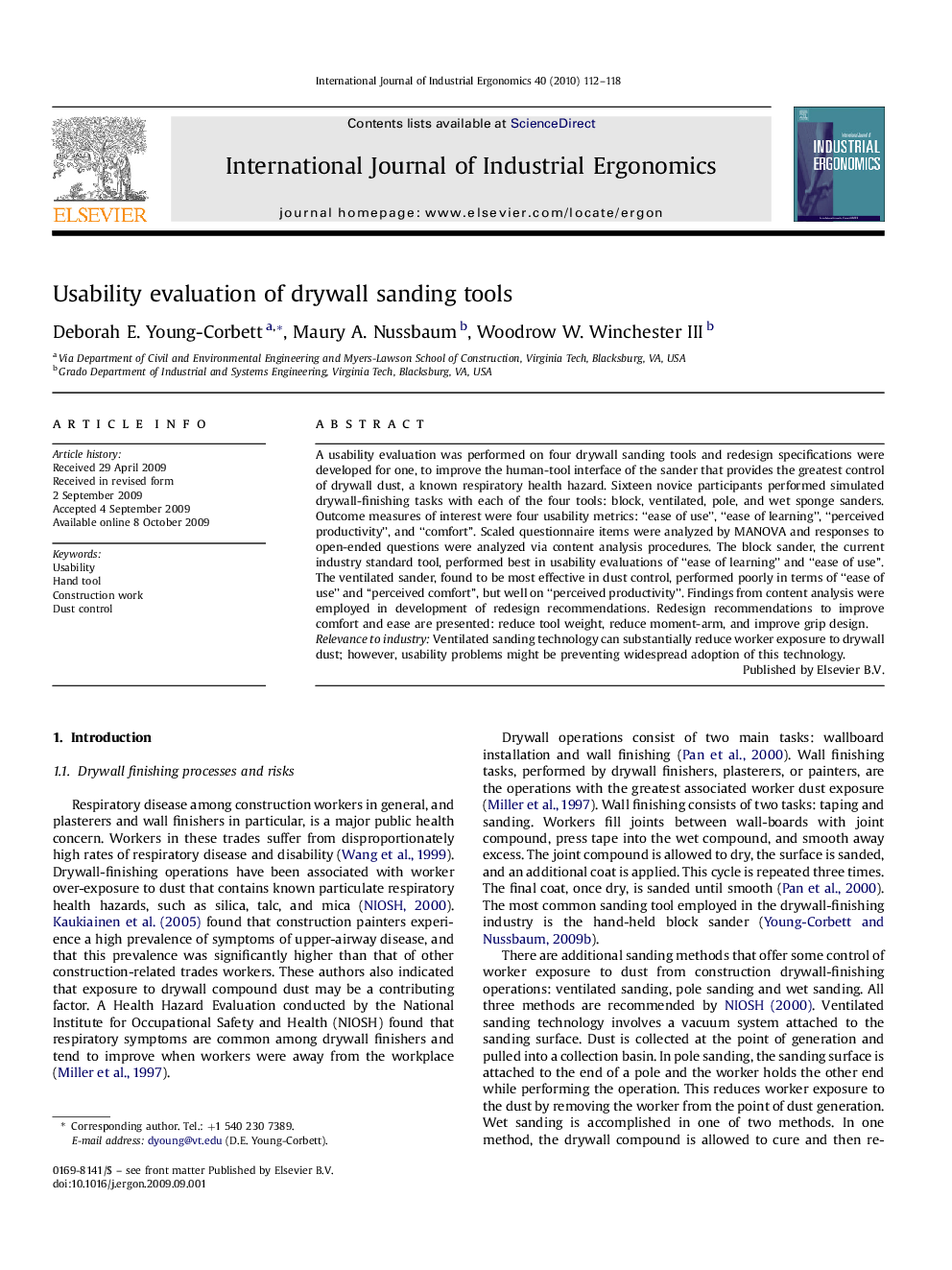| Article ID | Journal | Published Year | Pages | File Type |
|---|---|---|---|---|
| 1096550 | International Journal of Industrial Ergonomics | 2010 | 7 Pages |
A usability evaluation was performed on four drywall sanding tools and redesign specifications were developed for one, to improve the human-tool interface of the sander that provides the greatest control of drywall dust, a known respiratory health hazard. Sixteen novice participants performed simulated drywall-finishing tasks with each of the four tools: block, ventilated, pole, and wet sponge sanders. Outcome measures of interest were four usability metrics: “ease of use”, “ease of learning”, “perceived productivity”, and “comfort”. Scaled questionnaire items were analyzed by MANOVA and responses to open-ended questions were analyzed via content analysis procedures. The block sander, the current industry standard tool, performed best in usability evaluations of “ease of learning” and “ease of use”. The ventilated sander, found to be most effective in dust control, performed poorly in terms of “ease of use” and “perceived comfort”, but well on “perceived productivity”. Findings from content analysis were employed in development of redesign recommendations. Redesign recommendations to improve comfort and ease are presented: reduce tool weight, reduce moment-arm, and improve grip design.Relevance to industryVentilated sanding technology can substantially reduce worker exposure to drywall dust; however, usability problems might be preventing widespread adoption of this technology.
